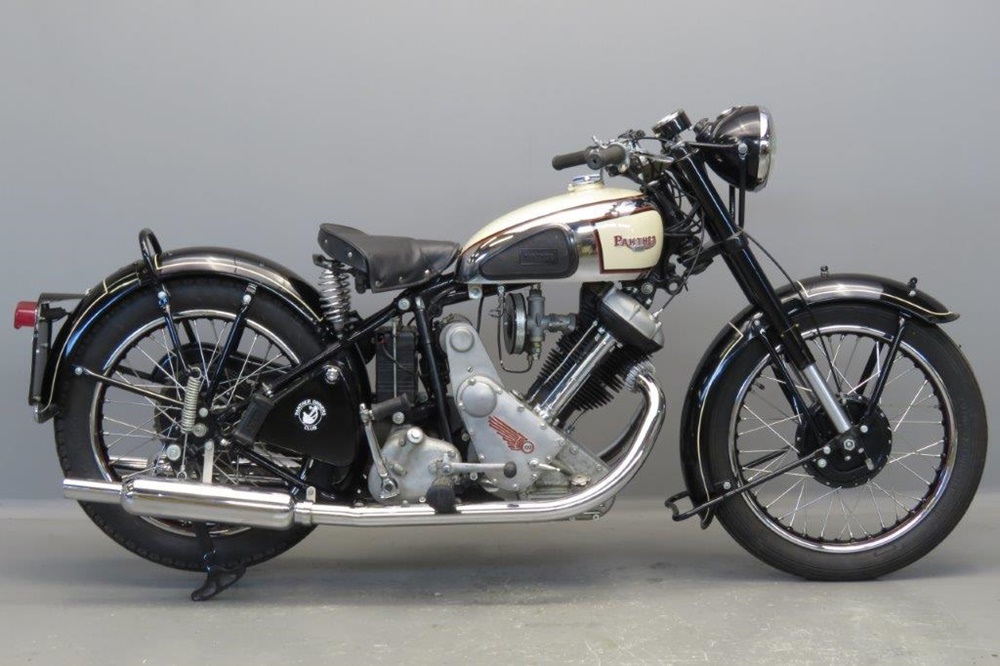While Phelon and Moore produced many motorcycles during their time, few gained the recognition that the Panther Model 100 enjoyed. It was not the fastest bike of its time – it wasn’t even designed for heavy use at the track. It also didn’t feature much in the way of innovative technology. Low slung, and featuring an almost flat profile, this was a very different sort of motorcycle to those tearing up the asphalt in races throughout the UK. So, what made the Panther Model 100 so popular at the time? What has kept it alive in the hearts of collectors today?
A Real History
While the Model 100 might date back only to 1932, the history of the bike goes back much farther. It reaches all the way back to 1904, when Phelon and Moore produced their first motorcycle and decided to use the engine itself to replace the front down tube on the frame. That characteristic stayed true for most of the company’s history, and is probably one of the most noticeable aesthetic elements about the Panther Model 100 (and other Panthers, of course).
The Panther Name and Evolution
The original Panther was born in 1923,when the company debuted a bike with a 555 cc engine (this was a side-valve single model). However, it would be another nine years before the Model 100 came to the market. The engine used was largely derived from the one used in the Model 60, and the frame utilised hailed from the model 50 and the 1928 version of the Panther.
In 1932, the Panther Model 100 officially launched, featuring a four-speed gearbox and a 598 cc engine (air-cooled) with a single overhead valve. It offered a top speed of just 70 miles per hour, and boasted only 23 bhp. The next year, the frame was redesigned, and the bike featured a new, deluxe, saddle. It also gained a hand-change gearbox (still a four-speed, but this one was sourced from Sturmey-Archer). A new foot-change gearbox was introduced in 1934.
1935’s model saw significant changes,particularly to the engine’s lubrication system. This year saw the introduction of the deep-finned sump system that would be used for most of the next three decades. This was also the bike that Blenkiron and Wallach rode from London to Cape Town.
The last Redwing model debuted in 1937,and the bike also gained a fully chromed fuel tank that year. A new, larger fuel tank was introduced two years later, and in 1940, WWII caused production to stop completely. It resumed in 1946. Steady improvements were made from that point until the model was discontinued in 1963. However, the Model 120 (a derivative of the Model 100) continued production until 1966.
Collectability Today
While the Panther Model 100 might not have the racing heritage of other British motorcycles, it remains one of the most collectable options out there. This is in large part to the undeniable aesthetics of the bike, but also its significant hauling capabilities, and its undeniably excellent fuel economy.
Source:
http://classic-motorbikes.net/classic-bike-images/panther-classic-motorcycles/
http://www.motorcycleclassics.com/classic-british-motorcycles/panther-model-100-zmpz17jfzhur
http://en.wikipedia.org/wiki/Panther_Model_100
Image:http://www.pinterest.co.uk/pin/499407046164742614/




